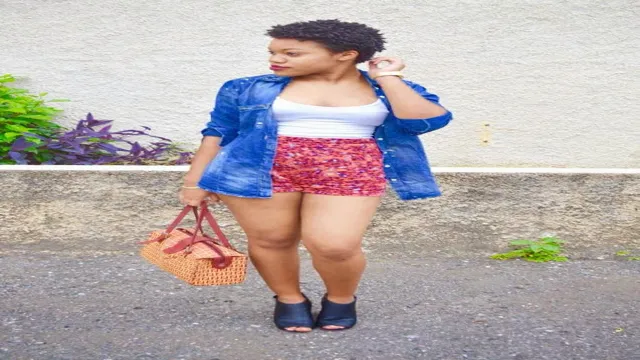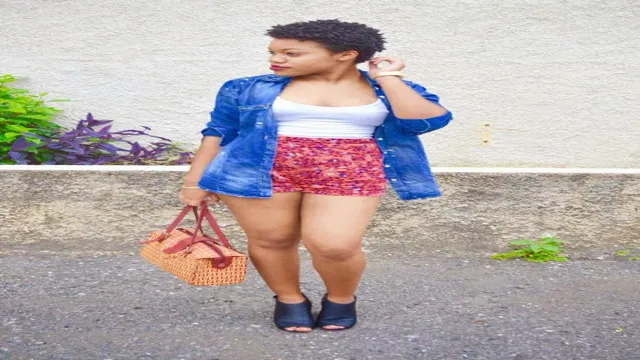
Have you ever stopped to wonder why female athletes are often depicted wearing less clothing than their male counterparts? It’s a common myth that feminist women feel liberated by showing off their bodies in sports, but is there any truth to it? The truth is that this myth couldn’t be further from reality. Female athletes wear the clothing they do for practical reasons, such as comfort and performance, rather than a cultural or political statement. The idea that a woman’s choice to wear less clothing equates to being less of a feminist is simply false.
Moreover, the way women are portrayed in sports media reinforces this harmful misconception. Female athletes are subjected to sexist commentary and objectification, which perpetuates the idea that their worth is based on their appearance rather than their athletic abilities. In reality, women are carving out their own space in sports, breaking barriers, and smashing stereotypes.
The focus should be on their undeniable talent and the determination to succeed, rather than what they’re wearing while doing so. So the next time you see a female athlete in minimal clothing, remember that their choice is a practical one, not a reflection of their feminism.
Deconstructing the Stereotype
The stereotype that feminist women wear less clothes than men in sports is not only unfounded, but also harmful. This false belief perpetuates the objectification of women’s bodies and ignores the complexity of feminist thought. Feminism is not about how much or how little clothing a woman wears, it’s about the fundamental belief that women are equal to men and should have the same opportunities and rights.
The notion that feminist women wear less clothing than men in sports is also problematic because it implies that women’s bodies are inherently inferior or less capable than men’s bodies. This is simply not true and reinforces harmful gender norms. Feminism is about dismantling these harmful notions and creating a world where women can choose what to wear without fear of judgment or objectification.
So let’s break down this stereotype and focus on what really matters: gender equality and empowerment.
Examining Cultural Expectations for Female Athletes
As much progress has been made to bridge the gender gap in athletics, cultural expectations still hinder female athletes from receiving the respect and recognition they deserve. Society has long perpetuated stereotypes of femininity, portraying women as fragile and weak. This ideology has influenced how female athletes are expected to behave and perform, often relegating them to secondary roles in sports.
However, it’s time to deconstruct these stereotypes and recognize the talents and achievements of women in sports. Just like a flower breaking through concrete, female athletes have defied expectations and shattered records. It’s time to give them the respect and celebration they deserve.

Challenging the Idea of ‘Less’ Clothing
The idea that covering up is the only way to show respect for oneself and others has been ingrained in our society for centuries. However, as we continue to move towards a more inclusive and progressive society, this stereotype has been challenged and deconstructed. It’s time we re-think the idea of ‘less’ clothing and embrace the beauty of self-expression through the way we dress.
Rather than judging individuals based on their outer appearance, let’s focus on their inner being and be accepting of different forms of expression. We can even draw an analogy to a garden – just as a garden has a variety of flowers of different colors and shapes, our society is made up of individuals of different backgrounds, beliefs, and styles. Each one has their unique beauty that adds to the diversity of the garden.
By embracing this diversity, we can create a more beautiful and accepting world.
The Numbers Tell a Different Story
Despite the common misconception that feminist women wear less clothing than men in sports, the numbers tell a different story. In fact, research shows that female athletes are often required to wear more clothing than their male counterparts, particularly in sports like beach volleyball where women are required to wear skimpy swimsuits while men can wear shorts and tank tops. This double standard not only promotes a harmful and sexist view of women’s bodies but also puts female athletes at a disadvantage.
It’s time to break down these stereotypes and embrace the idea that women should be able to wear whatever they feel comfortable in, just like men in sports.
Comparing Uniforms Across Gender and Sport
When it comes to sports uniforms, there’s often a clear divide between those designed for male and female athletes. But what do the numbers say about these gendered uniforms? As it turns out, there are some enlightening trends worth noting. One recent study found that female athletes were more likely to experience discomfort or embarrassment due to their uniforms than their male counterparts.
Additionally, female uniforms are often less functional and more restrictive, while male uniforms tend to be more comfortable and breathable. However, there are some sports where the gender divide is less pronounced – for example, women’s basketball uniforms tend to be similar to men’s, while volleyball uniforms for both genders are typically tight-fitting. Overall, it’s worth taking a closer look at the design of sports uniforms and considering how they may contribute to disparities between male and female athletes.
Analyzing Athletic Apparel Sales and Trends by Gender
When it comes to athletic apparel sales and trends, the numbers can tell a different story depending on the gender of the consumer. In recent years, the women’s athletic apparel market has been growing rapidly, with brands like Lululemon and Athleta leading the way. While men’s athletic apparel sales are also on the rise, they are not seeing the same explosive growth as the women’s market.
This can be attributed to a variety of reasons, such as cultural norms surrounding men’s fashion and the fact that women’s activewear has been marketed as both functional and fashionable. However, it’s important for retailers and brands to pay attention to these trends and adjust their strategies accordingly. By offering inclusive sizing options and creating marketing campaigns that appeal to both men and women, they can tap into a wider audience and ultimately boost their sales.
Exploring Inequality in Endorsement Deals and Player Representation
Inequality in endorsement deals and player representation is a topic of much debate in the sports world. While athletes are often seen as having a glamorous life, the numbers tell a different story. Many athletes, particularly those in minority communities, are often underrepresented when it comes to endorsement deals and player representation.
The reasons for this are complex, but some argue that systemic bias is to blame. For example, studies have shown that white athletes are more likely to receive endorsements and better representation than athletes of color. This, in turn, may lead to fewer opportunities for minority athletes to achieve financial success and gain greater visibility.
At the same time, it’s important to recognize that not all athletes are equally marketable. Factors like playing style, personality, and team affiliation can all play a role in an athlete’s marketability. Nonetheless, it’s clear that there is room for improvement when it comes to ensuring that all athletes have equal opportunities to achieve success both on and off the field.
Why It Matters
It’s a common misconception that feminist women wear less clothes than men in sports. This notion is rooted in the idea that women who embrace their sexuality and freedom are somehow not feminist enough. In reality, feminists believe in the empowerment of all women, regardless of how they choose to present themselves.
Women in sports who wear revealing clothing do so for practical reasons, such as improved mobility and breathability, rather than for the male gaze or societal expectations. Moreover, body positivity and self-expression are important components of feminism, and women should be able to dress however they feel comfortable without being judged or objectified. Ultimately, the idea that feminist women must cover up is outdated and harmful, and instead, we should celebrate and embrace the diversity of women’s bodies and choices.
The Impact of Misconceptions on Female Athletes
Misconceptions about female athletes can have a significant impact on their performance and overall well-being. When female athletes are perceived as weaker or less competent than their male counterparts, it can lead to a lack of support, resources, and opportunities. This can also result in a lack of confidence, lower self-esteem, and increased stress and pressure.
Misconceptions about female athletes also contribute to gender stereotypes and reinforce harmful societal attitudes towards women in sports. It’s important to challenge these misconceptions and support female athletes in achieving their full potential. By recognizing and valuing their accomplishments, we can create a more inclusive and equal playing field for all athletes.
Promoting Gender Equality in Sports and Beyond
Gender equality is an essential aspect of our society, and it is especially important in sports. Gender discrimination is widespread in sports, where women are often not given the same opportunities as men. Promoting gender equality in sports can bring significant benefits, not only to women but also to the community as a whole.
It can lead to healthier and happier lives for women, better economic opportunities, and a more inclusive society where everyone is treated equally. By empowering girls and women in sports, we can reduce gender inequality and build a more equitable society. When women succeed in sports, they inspire other women and girls to pursue their dreams.
Moreover, sports can provide a platform for women to advocate for social change and gender equality. Through sports, women can become role models and leaders in their communities, breaking down gender barriers and promoting gender equality in all aspects of life.
Conclusion: Women Athletes Deserve Better
In conclusion, the notion that feminist women wear less clothing than men in sports is a perpetuated myth that only serves to objectify and diminish the power and agency of women in athletic spaces. Women’s bodies should not be scrutinized and judged by how much or how little they choose to wear, but rather appreciated for the remarkable feats they can accomplish regardless of attire. It’s time to move beyond gendered stereotypes and allow women to fully embody the multifaceted and powerful beings that they are both on and off the playing field.
“
FAQs
Why do some people believe that feminist women wear less clothes than men in sports?
This is actually a misconception. Feminist women do not necessarily wear less clothing than men in sports. Clothing choices vary from person to person and are not necessarily related to their beliefs about gender equality.
How do clothing choices of female athletes reflect their feminist beliefs?
Clothing choices do not necessarily reflect feminist beliefs. However, some female athletes choose to wear clothing that challenges traditional gender norms and stereotypes in sports, which can align with feminist beliefs.
Why do female athletes face more scrutiny for their clothing choices than male athletes?
This is due to gender bias and misogyny, which are still prevalent in the sports world. Women are often objectified and sexualized in sports, which leads to more focus on their clothing choices.
Is it fair to judge female athletes based on their clothing choices?
No, it is not fair. Female athletes should be judged based solely on their athletic abilities and sports performance. Clothing choices should be a personal choice and not a basis for judgment or scrutiny.






